Description
|
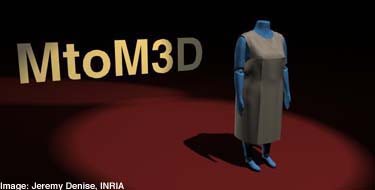 |
The project will offer a new method for fitted garment production especially for plus size people. It will develop a system dedicated to evaluating measurements from a standard reference and to computing corresponding alteration sets for garments directly from a set of physical mannequins defining different anatomical conformations. Elements will be integrated in order to evaluate alterations to apply to the 2D patterns of the standard size garment, mounted and displayed on a plus size mannequin. The vertical balance of the garment influenced by the mannequin volume will be studied on a set of mannequins defining different anatomical conformations. Fabric mechanical properties will be utilized in order to simulate fabric behaviour, especially the draping effects caused by the mannequin volume and the constraints due to the assembly of the garment pieces. A criterion describing vertical balance will be investigated and used for the computation of these alterations
|
|
|
.The Procedure
Traditional made-to-measure methods and equipment are analyzed to establish a set of alterations for 2D patterns in order to provide a standard model for a set of plus size mannequins. This set of mannequins represents different conformations of human bodies that belong to the plus size sector.
|
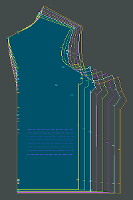
|
|

typical body conformation mannequins
|
This set of mannequins helps to determine the size of the garment from a standard size chart. The garment patterns from this standard size are altered using a standard apparel grading system. |
|
|
Then, available 3D data of a mannequin are used to develop a realistic simulation software that takes into account fabric parameters describing the fabric mechanical properties of a simulated garment in order to numerically dress it on a simulated 3D mannequin.
|
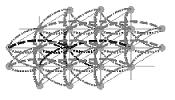
| computer model of the fabric |
|
The simulation of draping effects are controlled by comparison with the draping of a real mannequin.
|
|
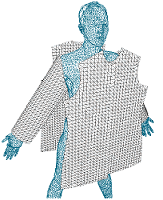 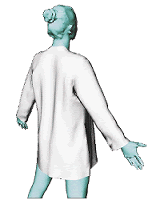 |
At this stage of the project, we have the digitized 2D patterns for a plus size mannequin and a procedure to simulate how a 3D mannequin wears a garment built for these patterns.
|
| software simulation on a standard human body (using prepositioned 2D patterns). |
|
|
Here, we merge this information to study the simulation of an adaptation of a standard size to a plus size garment. The results are validated by mounting manually the computed altered patterns on the real plus size mannequin which is compared to the 3D computer simulation.
|
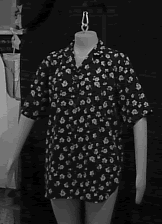
a garment on a plus-size mannequin. |
|
|
| |
The software will be validated and merged into a unique software package including a set of numerical mannequins for plus size body conformations, a set of alterations and grading capabilities to adapt a standard garment to these plus size standard mannequins, a set of commercial garments compatible with the system and a friendly user interface.
|
The input for the software is a conformation, a size, a type of fabric and a style of cloth chosen. The software delivers a 3D image of a mannequin wearing a garment with the corresponding conformation, size, cloth and type of style.
|
| |
Technology Transfer
|
| |
In the textile industry, there are strong relationships between industrial partners from the North and the Developing Countries of the Mediterranean Sea. Half of the industry in Tunisia and Morocco relies on the apparel sector.
|
The new computer assisted expertise being developed through this projet is done by a joint effort of northern and southern academic and industrial partners.
|
| |
The introduction and dissemination of this technology within the apparel industry for the production of made-to-measure garments will strengthen these links and facilitate the cooperation.
|
New markets for plus sizes will benefit to textile industry in developping countries both in the field of garment production as well as in the development of new technologies.
|
The advantages of simulations of draping or alterations on 3D customer plus-size mannequins will be quickly understood by the clothing industry.
|
| |
It will allow to shorten the cycles for collection design and increase the made-to-measure garment quality.
Draping simulation using fabric parameters will facilitate the use of more diverse types of materials for garment production.
|
|
|
|
| |
The Partners
|
ACCESSIT, Morocco
|
CAD MODELLING srl, Italy
|
ERCIM-EEIG, France
|
EMI, Morocco
|
INRIA, France
|
IRSIT, Tunisia
|
LECTRA SYSTEMES, France
|
SOCIETE MODERNE DE CONFECTION, Tunisia
|
STYL PLUS, France
|
| |
Contact
|
André Gagalowicz, Project Co-ordinator
INRIA
B.P. 105
F-78153 Le Chesnay Cedex
E-mail: Andre.Gagalowicz@inria.fr
|
|






